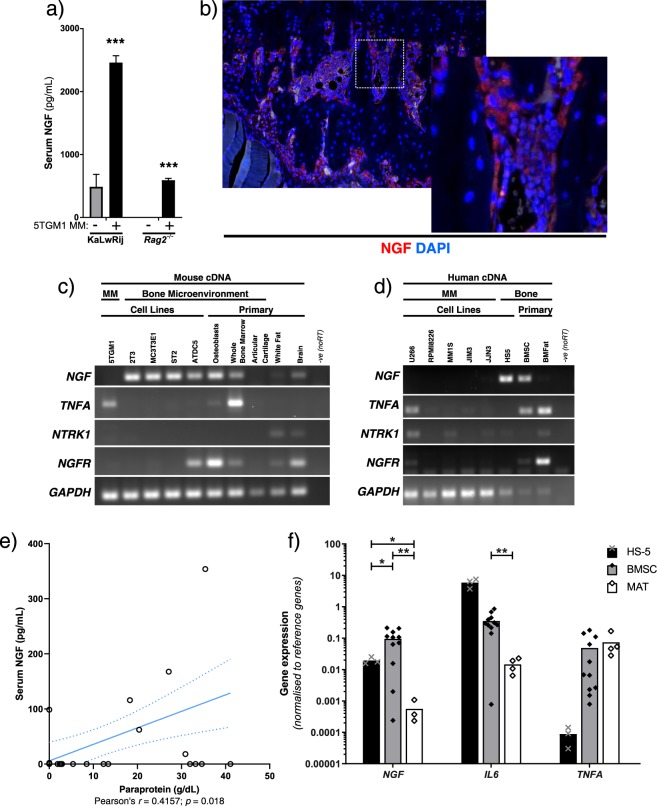Figure 1.
Increase in pain-related factors in multiple myeloma. (a) Serum NGF was detected by ELISA before inoculation or 25 days after 5TGM1-GFP+ inoculation of C57Bl6/KaLwRij or Rag2−/− mice. Statistical comparisons by t-test with Holm-Sidak multiple comparisons correction. (b) Immunofluorescent detection of NGF (red channel) in tibia of KaLwRij mice, counterstained with DAPI (blue channel). Magnified inset image corresponds to dashed box. (c) RT-PCR for mouse NGF, TNFA, NTRK1 (TrkA), NGFR (p75NTR) and GAPDH transcripts in the 5TGM1 MM cell line, bone stromal cell lines ST2, MC3T3e1, 2T3 and ATDC5, and primary tissue extracted from non-tumour-bearing KaLwRij mice as indicated. (d) RT-PCR for human homologs of the same transcripts in MM cell lines U266, RPMI8226, MM1S, JIM3 and JJN3, bone stromal cell line HS-5, and primary human BMSC or MAT cells. Gel images are cropped from different exposures, original uncropped images are available as Supplementary Material. (e) Serum NGF concentrations in MGUS and MM patients were quantified by ELISA, and tested for correlation with serum paraprotein levels as a marker of tumour burden. Pearson’s r correlation coefficient and p value shown. (f) Taqman qRT-PCR for NGF, IL6 and TNFA in the HS-5 cell line and primary patient-derived BMSC and MAT samples, relative to the average of two reference genes (GAPDH and POLR2A). Statistical comparisons per gene by one-way Brown-Forsythe and Welch ANOVA (for non-equal SD), with Dunnett’s multiple comparisons test. All statistical comparisons: ns: not significant, *p < 0.05; **p < 0.01; ***p < 0.001.

